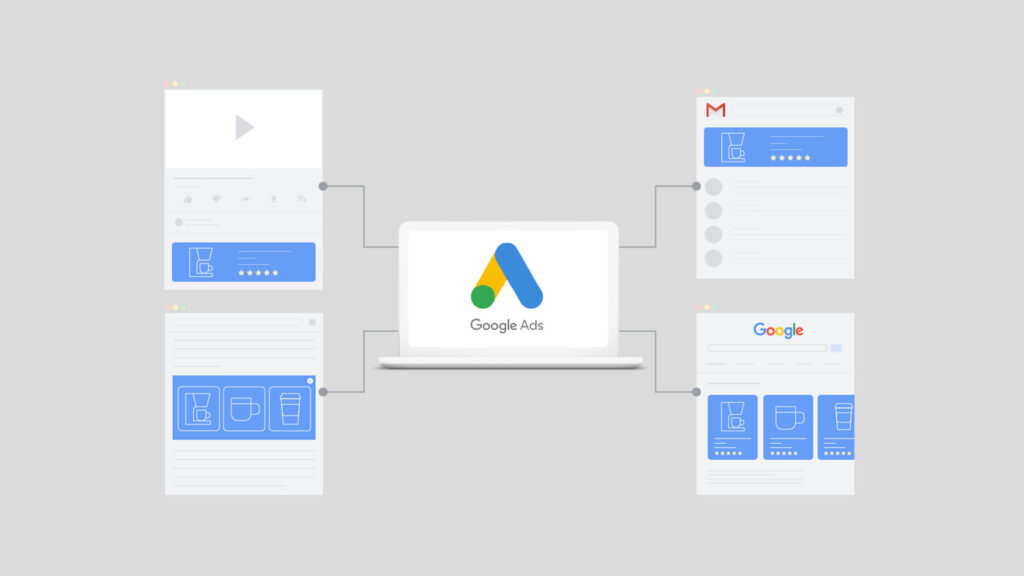Since June 30th, 2022, responsive search ads have been the primary search ad type on Google. Before we step ahead, there is a need to have an overview of responsive search ads. Since the time frame, you cannot create expanded text ads(ETAs), indicating that responsive search ads are the only option for creating new ads in a standard search campaign.
If you want to know how Google generates these ads, measures their success, the positives or negatives, and how a switch from expanded text ads will have an impact on the performance, read on.

What are responsive search ads?
Responsive search ads respond by showing more text and relevant messages to your potential customers. You can enter up to 4 descriptions and 15 multiple headlines at any given point in time. By combining these descriptions and headlines, Google is able to create 43680 different ad combinations.
Why ponder over Google Search ads?
What are the reasons why people are searching for specific phrases on Google? The answer is straightforward.
The reason is that they are searching for certain services or products. That is why the traffic from the Google search engine is valuable and effective. In a sales funnel, the action is located in the bottom section which indicates that people coming from Google are more decision-oriented in comparison to people from display campaigns.
This also means that the probability of selling, leaving behind your contact details, or even downloading an e-book is much higher in such cases.
This is of course if you display the ads for the right keywords
The manner in which Google generates responsive search ads?
Google ads generate responsive ads by using machine learning that tests different combinations to learn which high-performing ad combinations perform best for your audience. Here is an example of how responsive search ads will appear in Google.

The positives of responsive display ads
When you opt for a responsive search ad, you can cash in on the fact that when you enter more descriptions and headlines, this results in more possible ad combinations. Google may choose up to 3 headlines and 2 descriptions at a time, which may appear in various orders and combinations.
The four descriptions and 15 headlines can be arranged in over 40,000 unique combinations. Along with more headlines and descriptions, you can try a lot more ideas within a short space of time. This gives you confidence that Google ads will provide you with the best-performing ads for your customers.
The process to create RSAs
RSAs are the default account type for search campaigns on Google. On the Google Ads account, create or select the campaign you want and select responsive search ads from the drop-down menu. For your ad, you may enter 4 descriptions and 15 headlines. You can even pin the headlines or descriptions if you want them to be part of every ad combination. Just hover over the headline or the description, and a pin icon will appear. But if you feel that pinning is essential for your ad copy, as Google has said about pinning headlines and descriptions, Google generates a mobile and a desktop preview for you so you can view how the ad will look to customers.
Your ad is scored according to how well Google expects it will perform based on the data you have entered, and recommendations are generated.
A switch from expanded ad text to RSAs
With the switch from expanded text to RSA on the way, it is helpful if you prepare beforehand and familiarize yourself with the process. It is easy to make the switch by using the Google Ads editor and exporting your expanded texts in bulk. Below are a few steps by which you can give it a go.
- Decide which ads you wish to convert.
- Choose Export as a responsive advertisement when you click Export
- Choose your file type and the location where you would like to save the file.
- Fill in the missing fields.
- Long headline
- Business name
- Image
- Save the file with a new name.
- In the Google Ads edit account manager, select the account where you would like to import the file.
- Click import, and then from the file,
- When the import is done, click Finish.

How to report on the performance of responsive search ads
The performance and asset reporting for responsive search ads have recently been simplified by Google.. With the Google Ads reporting tool, you can see statistics that are exclusive to your responsive search ads, including top headlines, combinations, and descriptions. To access this, head over to Ads and Extensions, add a filter for ad types under attributes, and select responsive search ads.
Do you think a switch over to responsive search ads will have an impact on the performance levels?
There are various options to figure out whether the performance of responsive search ads is better or worse than that of extended search ads. While responsive search ads have better click rates in comparison to other ad types, their conversion rate is also lower. This puts off some of the advertisers from running this type of ad. But a recent study indicated that responsive search ads had higher impressions and a better click-through rate but lower conversions. The study also pointed out the fact that with a slightly low conversion rate, a 400% increase in impressions was reported, and a lot of incremental conversions in total occurred.
Interesting data was presented in research by Word Stream that compared the effectiveness of responsive search advertisements to regular text ads. Despite the decreased clickthrough rate, there were 283% more impressions per ad than there were for traditional advertising. The overall responsive search advertisements’ CTR rate revealed a higher click-through rate, setting the stage for increased transactions.
This means that switching to responsive search ads is not going to negatively impact your performance. A suggestion is to make the switch sooner rather than later, taking into consideration the machine learning period.
To conclude, automation is something that we expect to see more frequently in the Google Ads platform, smart campaigns, and max campaigns for automated bidding. With Google unsettling ETAs and favouring RSAs. Eventually, RSA will streamline paid advertising, making it more accessible and easier to use. Though we lose some control and metrics to report on. Currently, testing automation and collecting data is the key to optimising any Google Ads account.
It can be difficult to keep up with the Google AdWords platform’s continual changes.. If you require any help in understanding how Google ads generate response, professional help is available.
For more such blogs, Connect with GTECH.
Related Post
Publications, Insights & News from GTECH





